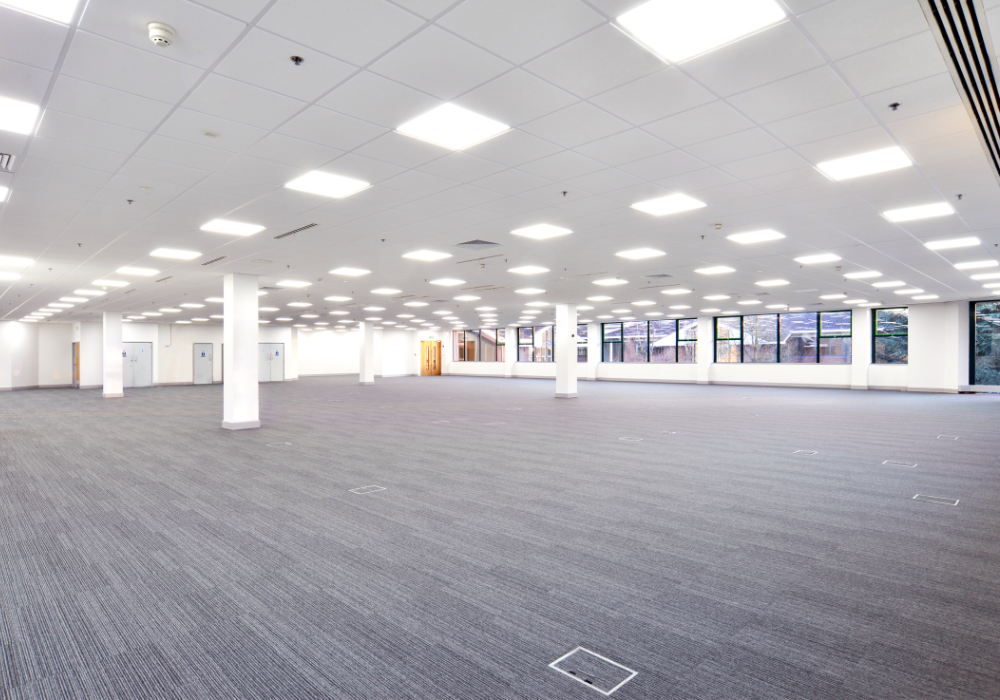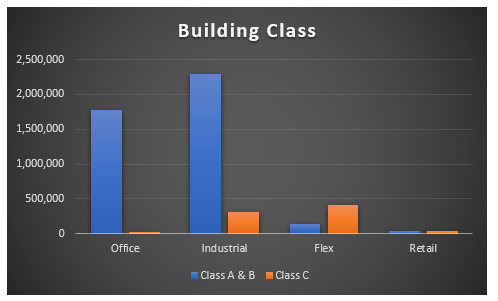Nearly 1.8 million square feet of office sublease space is currently available in the greater Baltimore metropolitan region, a figure that has nearly doubled since Q1 2020 when the amount stood at approximately 910,000 square feet. That’s according to data provided by MacKenzie Commercial Real Estate Services. Although the total volume has slightly declined from a high of nearly 2 million square feet last quarter, local brokers remain worried about the situation.
 Office buildings in Baltimore City are faring significantly worse compared to those in the outlining counties, according to KLNB Principal Joe Nolan. “Companies are still figuring out their correct footprint sizes as a result of the pandemic and, for those with large blocks of empty space, such as professional services companies, it just makes financial sense to put some of this space on the market.”
Office buildings in Baltimore City are faring significantly worse compared to those in the outlining counties, according to KLNB Principal Joe Nolan. “Companies are still figuring out their correct footprint sizes as a result of the pandemic and, for those with large blocks of empty space, such as professional services companies, it just makes financial sense to put some of this space on the market.”
Nolan cautioned that it is important to make the distinction between waterfront properties downtown and the Central Business District because projects such as McHenry Row, The Collective at Canton, and Baltimore Peninsula have been immune from the sublease problem.
Advantages to securing a sublease include having access to every amenity enjoyed by the company with the original lease – such as the conference rooms, kitchen area, security, and Internet access – but at a lower rental rate. For solo practitioners or groups with just a few employees, the socialization and networking aspects can be an attraction.
On the flip side, things might not be so rosy if the office space environment is unusually loud, distracting, or disruptive in some way, or if conditions cause the original lessor to leave the building for some reason. There may also be incompatibility issues.

Class ‘A & B’ product dominates the amount of sublet space currently available in the market, with one broker indicating there is more sublet space available now, than at any time in her career.
Gail Chrzan, Senior Vice President, Blue and Obrecht Realty, estimates that 10 percent of all available space in the market is of the sublet variety. She says many options and opportunities are available, ranging from 23,000 square feet of office space in a Columbia building to 157,000 square feet of industrial space in a suburban-area asset. Chrzan is working to lease a “terrific, recently renovated sublet space in Towson, but has only had two or three inquiries thus far.”
“On the one hand, sublet space is a great option because of the availability of amenities, the ability to walk right in with move-ready space, the tenant improvements, and, of course, the less expensive pricing,” she said. “But sharing a space is not for everyone and some companies won’t even look at sublet space. That includes the healthcare, university, and government sectors which, combined, attribute to a large percentage of prospects in the current environment.”
“As a broker, you don’t ever want to position your space as a fire sale and certain brokers don’t even want to take sublet lease as a leasing assignment because it can be extremely challenging,” Chrzan added. “All commercial real estate companies have sublet space currently and, at some point, they are competing with themselves in their own portfolio.”
Chrzan explains that there is more sublet space available now than at any time in her commercial real estate career. “The good news is that we are seeing incremental, step-by-step increases in the amount of leasing activity. We still have a long way to go, but the market is moving in the right direction.”